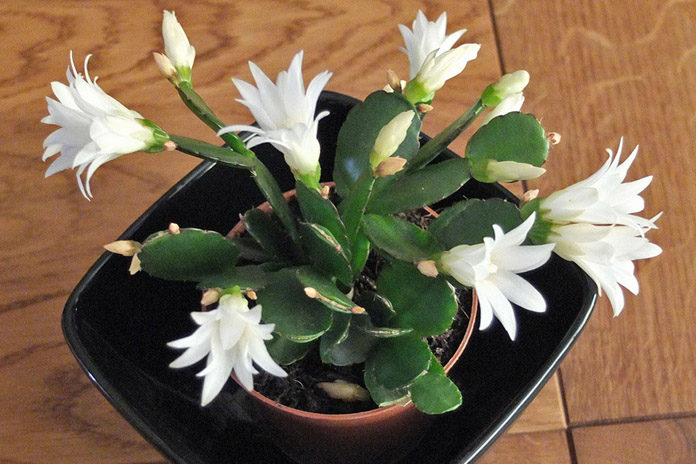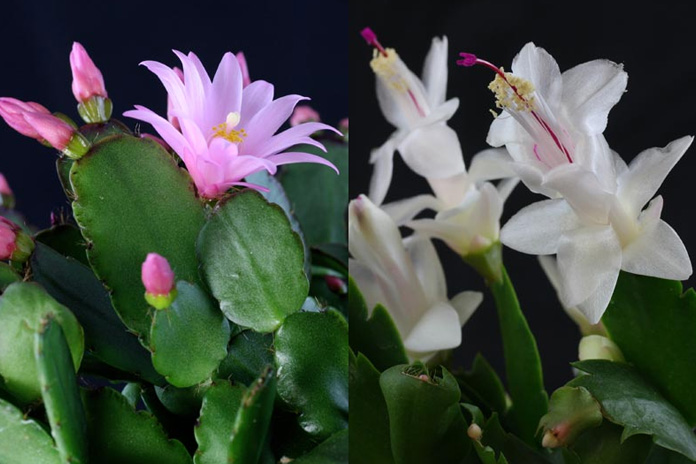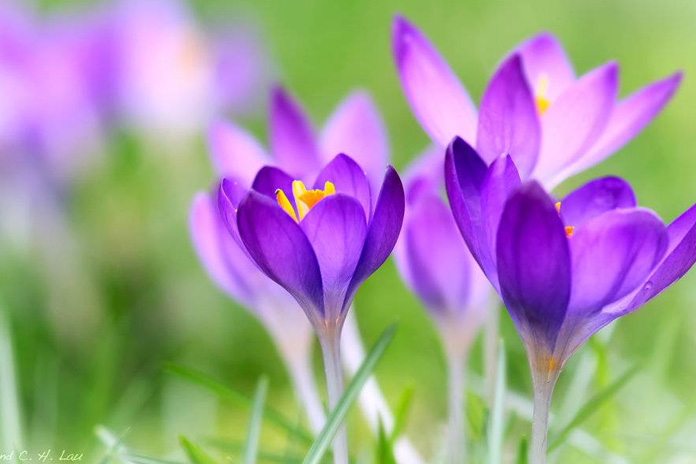
Easter Cactus – Did you know that even cactus can prove to be one of the best Easter flowers? Yes, it is true! Easter cactus is an awesome plant that bears breathtaking flowers. These cactus flowers can take the beauty of your Easter decorations to an altogether different level.
Easter cactus is also known as spring cactus since it blooms in the spring season. The plant originates from a drier climate unlike other holiday cacti such as Thanksgiving cactus or Christmas cactus.
Spring cactus boasts of succulent leaves and flowers of a variety of colors. You can find red, pink, and purple shades of the Easter Cactus although it also bears pure, white flowers.
More on Easter:
However, it is not just flowers that make Easter cactus delight of a gardening lover. This plant also works brilliantly as an indoor household plant. It is a low care and maintenance plant that you can keep until the next season of blooming.
Contents
Easter Cactus Vs. Christmas Cactus And Thanksgiving Cactus
 If you are wondering if Easter cactus is any different from other holiday cacti such as Christmas cactus or Thanksgiving cactus, then you must know there are considerable differences among these three varieties of cactus plant.
If you are wondering if Easter cactus is any different from other holiday cacti such as Christmas cactus or Thanksgiving cactus, then you must know there are considerable differences among these three varieties of cactus plant.
Firstly, Easter cactus originates from drier climate region whereas Christmas cactus and Thanksgiving cactus hail from Brazilian rainforests.
Secondly, as the name suggests, spring cactus blooms in late winter to early spring season. On the other hand, Christmas cactus flowers in late fall to winter season. Thanksgiving cactus blooms around a month earlier than the Christmas cactus.
Thirdly, all holiday cacti differ with respect to their leaf edges. Christmas cactus boasts of smooth and round edges whereas Easter cactus has bristles on the edges of its leaves. Thanksgiving cactus resembles similarity to common cacti as it has sharp, jagged leaves.
Lastly, Easter cactus may look similar to Christmas cactus when not bearing flowers, but in the blooming season, Easter cactus flower is more star-shaped than its Christmas counterpart.
Easter Cactus Care And How-to-Grow Instructions
If you plan to grow Easter cactus keep in mind that they require a specific set of conditions, particularly if you want them to bloom in the spring season. They may not require as much care and maintenance rest of the year but you need to make sure that you follow these instructions while growing and caring for the spring cactus:
Lighting: Even though it is a type of cactus, do not keep it under direct sunlight for long periods as leaves may suffer from sunburn in the form of reddish hues. Easter cactus thrives best in the afternoon shade when outside or indirect, bright light when inside.
Also Try: Try These Easter Dishes.
Temperature: Easter Cactus does well in an average room temperature inside homes. It does not require high temperature, unlike other cacti. Instead, it grows well in cooler temperatures with nighttime temperature further cooler than the day time to promote flowering.
Watering: Like other varieties of cactus plants, spring cactus can also store water in its leaves and can last for days without any watering. In fact, it is most sensitive to overwatering and wet soil for long period can lead to rotting of roots. Therefore, make sure that you allow the soil to become slightly drier than the moist before you water it again. Extreme dry soil can also lead to the shedding of leaves.
Easter Flower Blooming Tips
 Easter cactus needs special conditions to grow flowers. It needs less water, cooler temperature, and longer shady nights in the early winter season (October to November) to promote bud growth. That means during this time, you must bring it inside and keep it in darkness for 12-14 hours a day.
Easter cactus needs special conditions to grow flowers. It needs less water, cooler temperature, and longer shady nights in the early winter season (October to November) to promote bud growth. That means during this time, you must bring it inside and keep it in darkness for 12-14 hours a day.
The ideal temperature should be near 50 F (10 C) during this period. Only water it occasionally just to prevent soil from getting extra dry.
In December, you can move the plant to warmer conditions (60-65 F or 16-18 C). For this purpose, you can move it outside if the temperature is above freezing or you can keep it near the coolest window inside the house.
You can expect bud formation to start in February to March whereas flowering can happen between late March to late May.
What to Do With Spring Cactus After Easter is Over
You need not throw your Easter cactus out once it stops giving flowers. In fact, you may be tempted to do so as the plant sometimes fall into pieces at joints and collapse into segments. However, it is possible to get them rebloom again in the next season. Follow these steps to take care of your Easter cactus after Easter:
Once the blooming period of Easter cactus is over (typically during late spring), you need to reduce the frequency of watering. Do not water or feed the plant for about a month or so. You may add some water if you find leaves becoming shriveled else refrain from watering for at least one month.
Also Read: Easter Cakes You Can Serve Your Kids
Remember to remove the seedpods at the base of shriveled flowers. This will prevent the development of fruits that are not required by the cactus plant.
If your Easter cactus starts falling apart, do not panic as it is normal. You can take those fallen segments and root them again to grow new plants.
For reblooming, ensure that you have to give cold temperature in winters to the Easter cactus. Though it can tolerate temperature up to freezing but 50 F is usually enough for reblooming.
You can also trim the last segments above the joint to get even better blooming in the next season. Trimming helps in the growth of new stems that can produce flowers in next Easter. Propagating Easter cactus also helps in removal of seed pods that can lead to unnecessary fruit growth.
To sum up, Easter cactus can prove to be a lot more than just being another Easter flower. It is an easy and low-maintenance plant that can enhance the beauty of indoors throughout the season. Of course, the flowers during the spring season can take the beauty of Easter cactus to an altogether different level.
You can even use this plant independently for Easter basket ideas as well! Also, check out this guide on Easter Lily for another addition to your gardening arsenal for Easter 2017.
